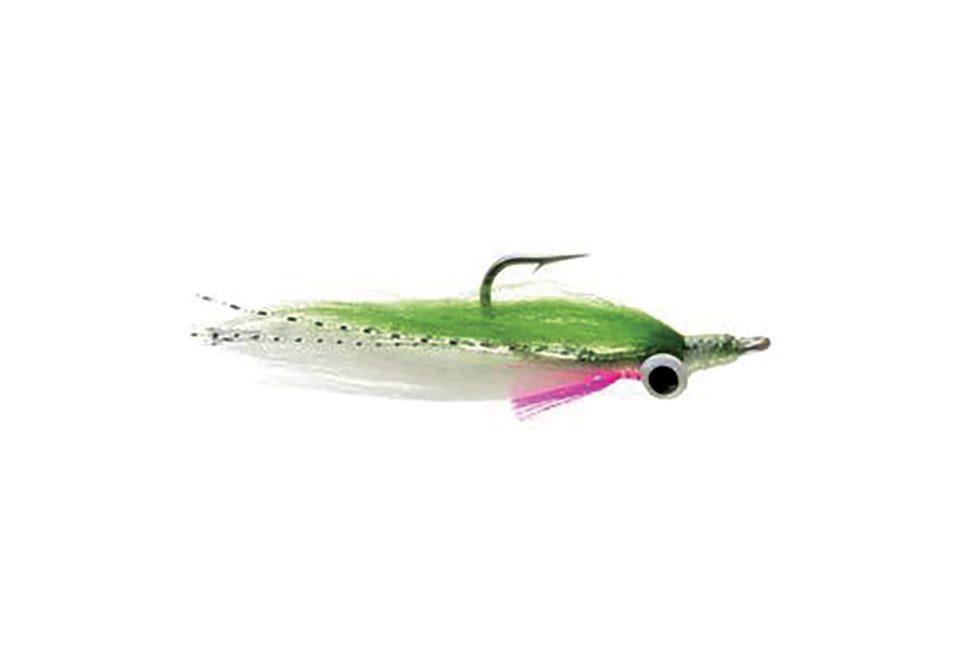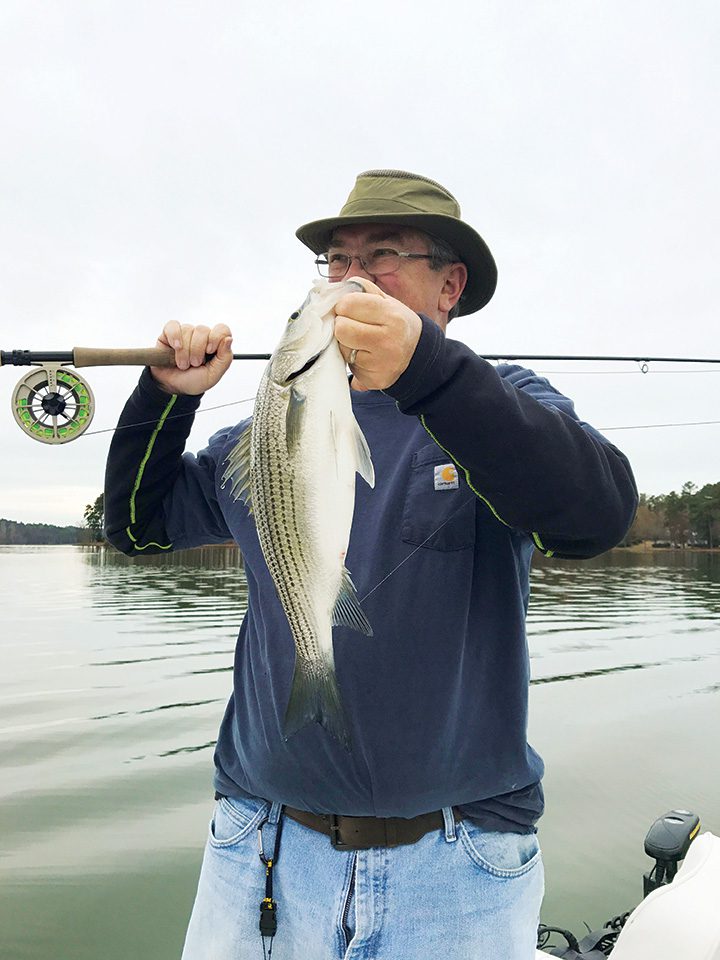By Capt. Wayne Moore
Across the region, hybrid and striped bass are some of the most exciting gamefish in our reservoirs. Targeting them with flies can be difficult, but it has to be the most exciting way to catch them.
Any article written about this subject better mention the name Henry Cowen. Having chased stripers on north Georgia’s Lake Lanier for more than 20 years, Cowen is a pioneer of the specialized techniques and tackle it takes. I fish middle-Georgia’s Lake Oconee, and much of what I do was learned from Cowen. There are differences between the two reservoirs, but I believe similar techniques, patterns and equipment can be adapted to catch stripers and hybrids on any lake.
Equipment
I like a 9-foot, 8-weight rod. Scott’s Meridian is my choice, but that model is being replaced by their similar Flex fast-action freshwater, which will probably do the job just as well. Stripers and hybrids pull hard, so you’ll need a decent reel. I use a Lamson Speedstar. It’s not too high end, but it does have a sealed conical drag.
For line, I use RIO Intouch Outbound short intermediate most of the time. This allows me to fish both on the surface and below it without having to change spools.
Opportunities and Tactics
Topwater: Fly fishing for stripers and hybrids when they are feeding on top is exhilarating. Imagine a school of fish knocking threadfin shad into the air. In some cases they’ll rise every 10 square feet for 30 or 40 feet around your boat.
It’s amazing, but it requires specialized conditions. On Oconee, this occurs when water is pumping up from Wallace dam. When water temperatures are warm, it is a brief, first-light bite, but as the water cools it lasts longer.
I cast a Cowen’s Somethin’ Else, a wiggle minnow, or a Pop-N-Fly rig. The Somethin’ Else is my go-to fly. If they are schooling, I approach with as much stealth as possible and make a long cast just beyond and in front of the rising fish. The retrieve is critical. Cowen calls it “feeding the fish.” It is five short strips followed by a pause. If you get bit, get the fish on reel quickly. You’d be surprised how fast charging hybrids can snap a leader.
The wiggle minnow is fished differently, same basic cast, but you need to keep the fly moving. Often it’s good to put the rod under your arm and strip with both hands. Gary Dubiel’s Pop-N-Fly is a popping cork for a fly rod. Tie in a feathered, white floating fly behind it, and it is deadly.
Chasing Gulls: This usually fires up on Oconee in November and is very good in December. It’s a tactic employed by striper and hybrid fishermen all over the Southeast. While this is a topwater bite, and you will see the gulls dive bombing shad, use the Somethin’ Else exclusively during this time and you will have greater success.
Night Fishing: If you like to get up very early or don’t mind fishing at night, darkness may offer the best probability of connecting with a striper or hybrid. Dock lights are key.
Approach very quietly and work the outer edges of the light. Again, use intermediate line and Somethin’ Else.
Be ready to haul a big fish away from the dock pilings in a hurry. If you get a big striper on, it might require assistance from the trolling motor.
Fishing Humps: When the fish are not on top, it’s time to locate humps with your electronics and fish deep. On Oconee, this usually means humps that rise from 30 feet or deeper up to 15 feet. You’ll need sink-tip line for this tactic and a short piece of 12-lb. fluorocarbon leader.
Cast past the hump and count down the fly as it drops to the fish. The count will vary depending on the fly and line you’re using.
Capt. Wayne Moore owns Oconee On The Fly. Check them out at www.oconeeonthefly.com.



